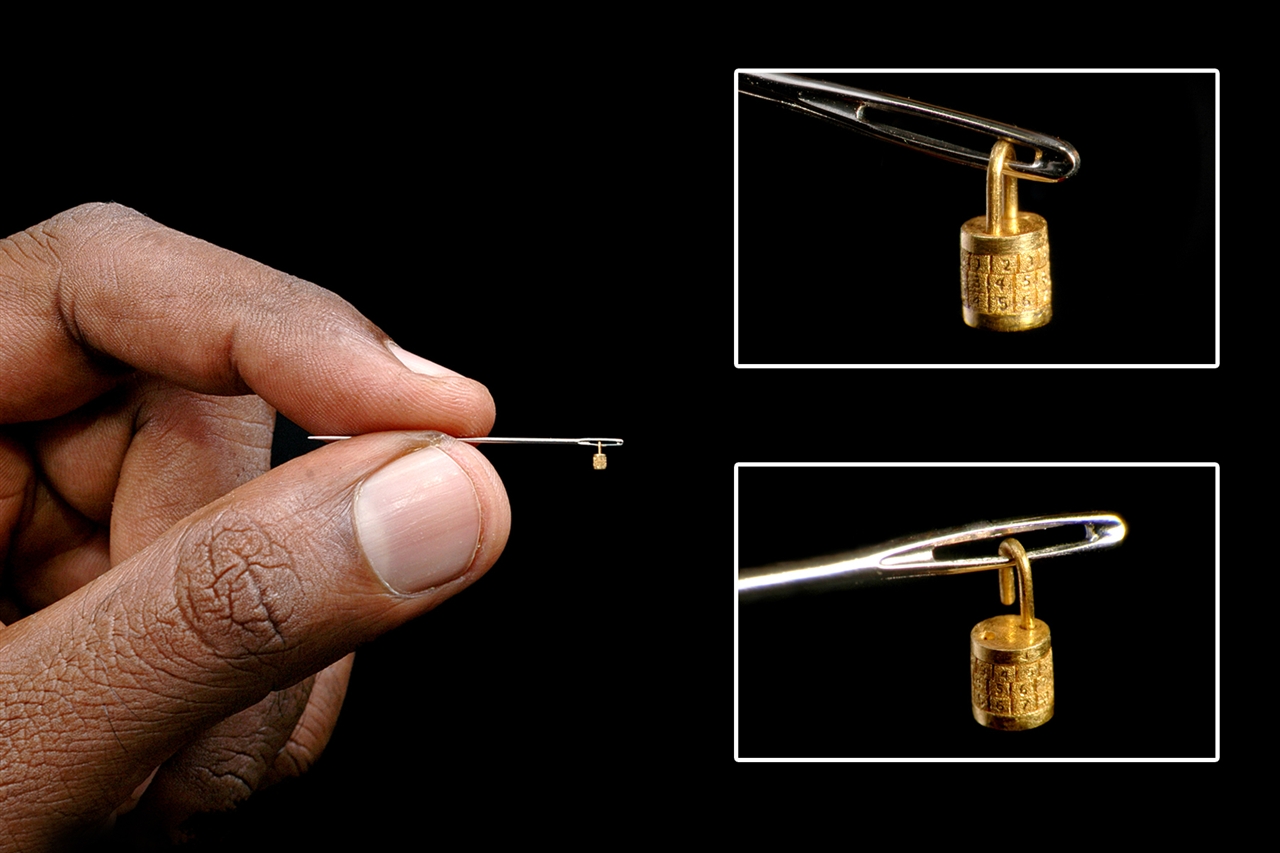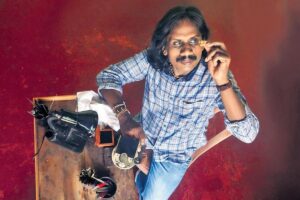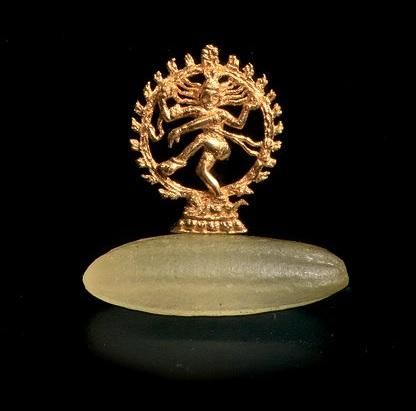Miniature art: Inside the magnificent 3mm universe

Subramaniam's work holds the world record for being the smallest functioning gold chain code lock (Photo Credit: Ganesh Subramaniam)
For many, passing a thread through the eye of a needle would rank among one of the toughest things to do. It requires immense concentration and patience to find success.
And, here is Ganesh Subramanian, a goldsmith and miniature artist, who has perfected the art of the small and can fit entire sculptures inside that very needle-hole. Subramaniam loves to scale down normal objects to the size of a mustard seed.
“Small is beautiful, and so is my world. Most of my artworks are difficult to see with the naked eye. And therein lies their charm,” Subramaniam tells Media India Group. Carved with unsurpassed detailing, Subramaniam’s mustard seed-sized sculptures can be viewed only with a 12x lens.
Popularly known as the ‘nano artist of Kerala’, this 46-year-old has completed around 60 miniature works. His latest piece, Escape from Covid, focuses on social awareness. Completed in 20 days, it portrays a man equipped with sanitisers, facemask and a medicine box breaking the chain of coronavirus presented in the background. The finished sculpture sits on top of a needle. According to the Subramaniam, the chain – which is made of gold – is thinner than a strand of hair.
Apart from creating nano figurines of Hindu gods and goddesses, he has also made minute sculptures of Kathakali performers and historical figures. “I have crafted miniature models of everything from a dancing Nataraja to ‘Ananthashayanam’, all of them made of 22-carat gold,” he adds.
Big efforts behind the small sculptures
What started as a hobby in 2005 with a 30mg sculpture of an oarsman with his boat, soon turned into a passion for Subramaniam. “I first found success 16 years ago when I made the miniature of a boat and oarsman. It was made after many months of trial and error. Even deciding on the working tool was a challenge. I use a tool made out of the usual sewing needles for all the work. A 20x lens is used while making the models,” he explains.
He further adds that each miniature sculpture requires at least three months to finish. To give a sense of the size of the models, he has each of them on top of rice grains, needle tips or pencil tips. In some cases, he has used the needle hole itself, like in the case of a peacock on a tree.
“Eyesight is the key to this work. Each day of sculpting creates so much strain on the eyes,” he says.
Though he has sculpted replicas of historical monuments such as the Taj Mahal and figures of Hindu deities, the piece closest to his heart is the Anantha Vijayam, an engraved ring with a 3mm-tall figure of Lord Vishnu. Made in 2009 for Uthradom Thirunal Marthanda Varma, of the former royal family of Travancore, it remains one of his most prized creations. “As soon as one presses a button on the ring, a lens pops up through which the idol of Lord Vishnu can be viewed,” adds Subramaniam.
While the Anantha Vijayam is his favourite and has achieved much acclaim, what really challenged him was designing a miniature version of a functional code lock. The work holds the world record for being the smallest functioning gold chain code lock. “It has a three-digit combination like normal locks. I could finish it only on my second attempt as a slight variation in alignment could cause the lock to malfunction,” he says.
Many accolades for miniature art
The news of the ring reached Malayalam actor Mohanlal who requested Ganesh to make a similar one for him in 2010. “Mohanlal saw the ring and asked for a Lord Shiva on the ring he was wearing,” he says. Following Mohanlal, quite a few collectors have commissioned the ring. Presently different versions of the ring, all crafted by Subramaniam, are owned by around 15 people worldwide.
Former President A.P.J. Abdul Kalam had also sent him a letter of appreciation for his miniature cannon. Modelled on the lines of the cannons used in the 19th century, it is 4.75 mm long and stands 1.30 mm high and took two months of relentless effort to shape. “I took a lot of pain with the wheels of the cannon, which is really intricate,’’ says Subramaniam.
Subramaniam further says that miniature art in its true form is very fine, precise and difficult. It becomes expensive and very time-consuming. The government should provide a degree in Indian miniature art at schools across the country. This will help bring about a new generation of skilled artists in this ancient Indian art,” he adds.
He has been conferred a doctorate from the International Tamil University, US, and is now thinking of ways to pass on his knowledge to the next generation.
With international travel restrictions set to ease, he is hopeful that things will work out in his favour. “Special arrangements are needed to transport my miniature sculptures. Unlike a normal art exhibition, each work additionally needs a lens placed beside it to enable people to figure its original size,” he says.
Subramaniam dreams of setting up a museum of the smallest sculptures in the world someday. He has held solo shows in cities such as Hyderabad, Delhi and Chennai, but wishes now to exhibit abroad too.











